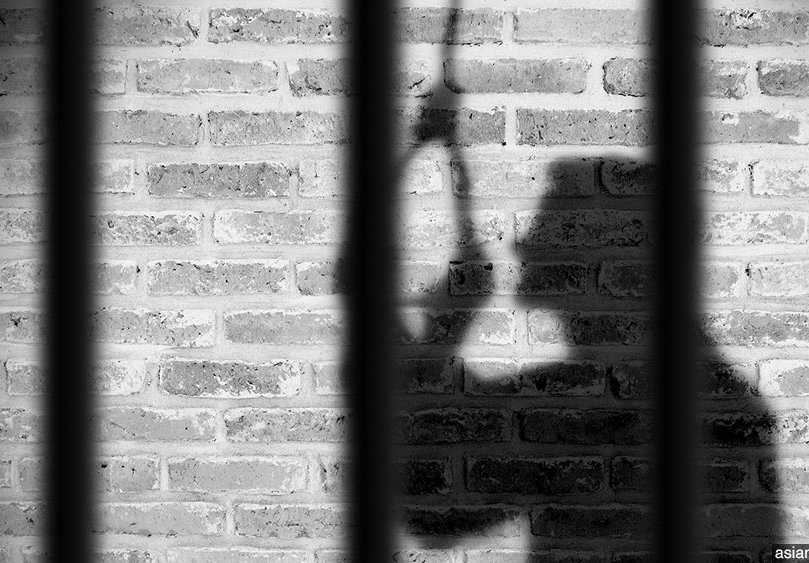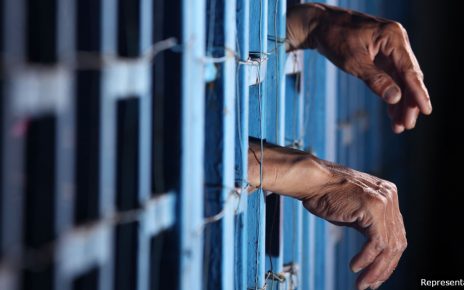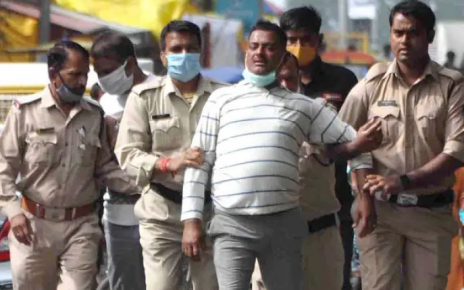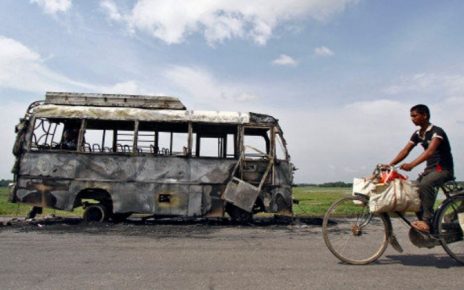IndiaSpend
19 November 2020
By Raja Bagga
New Delhi: In the last 10 years, the majority (69%) of 1,004 deaths in police custody have been attributed to either illness and natural causes (40%), or to alleged suicide (29%), in National Crime Records Bureau (NCRB) data.
Details on whether deaths by illness are due to a prolonged or sudden illness, or whether hospitalisation is linked to conditions/ circumstances in custody, or due to assault in custody, are not provided in the NCRB’s annual Crime in India (CII) reports, the key central government database.
More deaths by suicide in police custody have been reported over the past decade, with 36% reported as suicides during 2015-2019. In some cases, however, families have alleged foul play, or that suicides were prompted by custodial torture, a review of media reports suggests.
Physical assault by police has been recorded only from 2014 onward, and in just 6% of cases. In 2019, only 2.4% of the 85 deaths in police custody were attributed to assault by police in the CII report for that year. However, 76% of 124 deaths in police custody documented during the same year by the NGO platform National Campaign Against Torture (NCAT) were attribued to torture or foul play.
The law requires that every death in custody be enquired into individually. CII data on inquiries into death in police custody, however, does not specify if one person died in a given case or more, which leads to some discrepancy in the records. For instance, in the case of the two traders P. Jayaraj and J. Bennicks who died in police custody in Thoothukudi, Tamil Nadu, in June 2020, one case pertains to two deaths.
Our review of 124 such cases from 2019 compiled by NCAT shows that 97% of the cases related to the death of one person. However, since 2017, 255 persons have died in police custody but 144 cases have been registered in this regard, per CII data. (84 police personnel have been arrested, and charge sheets have been filed in 56 cases.) For the purpose of this story, we have worked with the presumption that each case pertains to one death.
This second and concluding part of our series on deaths in police custody reveals non-compliance with mandatory post-death inquiry processes in 30% of cases, and gaps and ambiguity in CII data on reasons for and enquiries into such deaths. We also highlight experts’ recommendations on ways to increase accountability for deaths in police custody by improving reporting by states and union territories (UTs) to NCRB. (Read the first part on mismatches between the number of deaths in police custody in NCRB records with NHRC, media reports and civil society reports here.)
Ambiguity in assigning reasons for deaths in police custody
Different CII reports over the past decade have recorded reasons differently, making a comparative analysis difficult. The analysis below thus focuses primarily on data on suicide and illness/ hospitalisation over the years, and data from 2019.
In the last 10 years, 403 of 1,004 deaths (40%) in police custody are listed as due to “Hospitalisation/ Illness/ Natural deaths” — a majority of such deaths.
The category “death due to illness”, as we said, does not specify whether the illness was prolonged or sudden. There are no data on causes for hospitalisation, either — whether it was linked to conditions or circumstances in custody, or due to assault by the police or by some other person in custody. In every case of death attributed to illness, information on whether the illness existed prior to arrest or otherwise should be recorded and accordingly reported by the NCRB, said former Indian Police Service officer Kamal Kumar.
‘More’ suicides over the past decade
More deaths by suicide in police custody have been reported over the past decade in CII reports. In the last five years (2015-2019), 159 of 444 deaths in police custody (36%) have been reported as suicides, compared to 136 of 560 deaths (24%) from 2010-2014.
In 2019, 81% of the reported reasons were either death by suicide (39%) or illness/death in hospitals (42%) during treatment. Of the 36 deaths in police custody reported due to illness or in hospitals in 2019, Tamil Nadu (10), Maharashtra (7) and Gujarat (5) accounted for more than 60%.
In some instances, police initially claimed that the deaths were by suicide, but families alleged foul play in custody, a brief review of media reports suggests. Instances include the deaths of Karan in Ludhiana, Punjab, in April 2019; Balraj Singh in Delhi and Jaspal Singh in Faridkot, Punjab, in May 2019; and Dhiraj Singh Rana in Uttarakhand and Baljinder Singh in Amritsar, Punjab, in July 2019.
Media reports also point to some instances where reported suicides in custody may have been prompted by custodial torture, for instance Ganesh Ravidas in Nalanda, Bihar in July 2019 and Bittu in Hansi, Haryana in August 2019.
Deaths due to assault in police custody
Only in 2014 did physical assault by police begin to be reported as a cause of death in police custody. In the last six years (2014 to 2019), 33 persons (6.1% of the 537 who died in police custody) died due to injuries sustained during custody due to physical assault by police, according to CII reports. These numbers may be higher if the deaths due to illness/ hospitalisation, alleged suicides and ‘others’ are explained further.
In 2019, two of a total 85 (2.4%) deaths in police custody were attributed to assault by police in the CII report. However, a majority (76%) of 124 deaths in police custody documented in 2019 by NCAT in its India: Annual Report on Torture report were attributed to “torture” or “foul play”.
Mandatory inquiries foregone
Mandatory judicial inquiries are critical in identifying reasons for deaths in police custody, but are not conducted in every case, experts said. The CII reports also do not specify how the cause of death was ascribed, or which authority certified the stated cause in cases where enquiries were not ordered, or were ordered but not conducted, or were conducted but not completed in the same year.
Until 2005, Section 176 of the Code Of Criminal Procedure (CrPC) required an executive magistrate to conduct an enquiry into every death in police custody. A 2005 amendment to the section mandated an enquiry by a judicial or metropolitan magistrate in addition to inquiries by the police or an executive magistrate. An executive magistrate’s enquiry can only ascertain the cause of death. An enquiry by the judicial magistrate, however, can have a wider scope to investigate the cause of death, the circumstances, the manner in which the injuries were caused and the persons responsible.
In the 1,004 cases of deaths in police custody over the past decade, 297 judicial enquiries were ordered, as were 402 enquiries by an executive magistrate. It is unclear whether each enquiry pertained to a single death, and whether some of these enquiries were into the same deaths. “This clearly shows that enquiries were not ordered in considerable number of police custody deaths, a clear violation of the Code of Criminal Procedure,” said Vikram Singh, former director general of police, Uttar Pradesh, “This shows lack of accountability in the system even in such grave cases of custodial deaths.”

In Uttar Pradesh, 73 enquiries were conducted, almost all (68 of 73, or 93%) by an executive magistrate, and no judicial enquiries. In Punjab, 25 of 29 enquiries were by an executive magistrate and not a judicial magistrate.
In 10 states–Chhattisgarh (in 2013), Gujarat (in 2010), Kerala (in 2019), Madhya Pradesh (in 2015), Meghalaya (in 2013), Odisha (in 2015 and 2017), Rajasthan (in 2011 and 2013), Tamil Nadu (in 2014), Tripura (in 2015 and 2019), and West Bengal (in 2013)–the number of enquiries reported were higher than the number of deaths reported. No explanation has been given for this. (These enquiries could relate to deaths in previous years, but this is not stated).
District magistrates or police chiefs must also report every death in police custody to the National Human Rights Commission (NHRC) within 24 hours, as per NHRC guidelines. These, combined with mandatory enquiries, are accountability measures to understand causes for police custody deaths, at arm’s-length from the police. CII reports do not provide information on intimations made to the NHRC. NHRC statistics also show greater numbers of deaths in police custody than CII data, though some of this discrepancy could be because, as we have said before, CII data are not clear on whether each recorded case pertains to one death or more.
Few cases registered against police
In the past decade, 472 cases of custodial death were registered against police personnel, and it is unclear whether each case pertains to a single death or multiple deaths.
NCRB data on arrests of police personnel in cases of custodial deaths are available only since 2017. Since then, only 144 cases were registered while 255 deaths were recorded during the same period. Since 2017, 84 police personnel have been arrested and 56 have been charge-sheeted.
While 1,004 deaths in police custody have taken place in the past decade, only four police personnel have been convicted during this period (one in 2010 and three in 2013). It is also unclear whether CII data on conviction of police personnel pertain to the same year as the death in police custody.
| Cases Registered and Charge Sheets filed in Cases of Death in Police Custody, 2010-2019 | |||||
|---|---|---|---|---|---|
| Year | Death in Police Custody | Cases Registered | Police personnel Arrested | Police personnel Chargesheeted | Cases Registered (as a % of Deaths) |
| 2010 | 82 | 42 | Information not provided / maintained | 26 | 51.22 |
| 2011 | 123 | 59 | 14 | 47.97 | |
| 2012 | 129 | 70 | 10 | 54.26 | |
| 2013 | 133 | 71 | 2 | 53.38 | |
| 2014 | 93 | 28 | 26 | 30.11 | |
| 2015 | 97 | 33 | 28 | 34.02 | |
| 2016 | 92 | 25 | 24 | 27.17 | |
| 2017 | 100 | 62 | 33 | 27 | 62 |
| 2018 | 70 | 44 | 23 | 13 | 62.86 |
| 2019 | 85 | 38 | 28 | 16 | 44.71 |
| Total | 1,004 | 472 | 84 | 186 | 47.01 |
Source: Crime In India reports, 2010-19, National Crime Records Bureau
Barriers in obtaining conviction of police personnel in cases of custodial deaths have been pointed out by multiple reports, including the Law Commission of India’s 1994 report on Custodial Crimes (152nd Report), Human Rights Watch’s 2016 report Bound by Brotherhood: India’s Failure to End Killings in Police Custody, and the NCAT’s India: Annual Report On Torture, 2019. All refer to the requirement of prior sanction to prosecute a public servant under Section 197 CrPC, lack of evidence in custodial settings, and witnesses turning hostile, among other factors.
How to increase accountability
Since 1953, data in the annual CII reports have been used to understand crime patterns and inform policy. Our analysis reveals that there is no holistic or accurate information on the reasons for deaths in custody and the outcomes of inquiries into these deaths. This can be improved by incorporating these changes:
1) CII reports should tell us accurately how many people died in police custody, the probable reasons for the deaths, the final cause of death determined by an enquiry and the demographic details of the individuals who died, including age, gender, caste and religion, according to Rahul Singh, director of the National Dalit Movement for Justice, part of the National Campaign on Dalit Human Rights coalition headquartered in Delhi. Inclusion of such details can highlight how many persons from specific groups such as marginalised communities die in police custody, across or in parts of India, he Singh. For instance, while Muslims account for 6.57% of the population in Madhya Pradesh, they constituted 24.45% of all persons arrested between March 22 and May 31, 2020, for violations of the COVID-19 lockdown in the state, according to an October 2020 report by the Bhopal-based Criminal Justice and Police Accountability project. Persons from scheduled castes and scheduled and denotified tribal communities were also “over-represented” among those arrested for excise offences, said the report.
2) CII reports must also include key data points on mandatory inquiries into deaths in custody. In the last 10 years, the titles of columns providing information about judicial and magisterial enquiries have been inconsistent, as the table below indicates, with no explanation provided. From 2010 to 2013, enquiry “ordered” and enquiry “conducted” were clubbed together and seemingly used synonymously. This constrains external analyses to presume they mean the same thing. After 2013, judicial inquiry was reported as either only ordered, or conducted–again without explanation–leaving it unclear in how many cases mandatory judicial inquiry was ordered, and in how many cases inquiry was actually conducted.
| Phrasing of the Enquiries into deaths in police custody from 2010 to 2019 | ||||
|---|---|---|---|---|
| Year | Deaths In Police Custody of Persons Not Remanded To Police Custody | Deaths In Police Custody of Persons Remanded To Police Custody | ||
| 2010 | Magisterial Enquiry Ordered/ Conducted |
Judicial Enquiry Ordered/ Conducted |
Magisterial Enquiry Ordered/ Conducted |
Judicial Enquiry Ordered/ Conducted |
| 2011 | ||||
| 2012 | ||||
| 2013 | ||||
| 2014 | Magisterial Enquiry Ordered | Judicial Enquiry Conducted | Judicial Enquiry Ordered | Judicial Enquiry Conducted |
| 2015 | ||||
| 2016 | Magisterial Enquiry Ordered | – | Judicial Enquiry Ordered | – |
| 2017 | Magisterial Enquiries Ordered |
Judicial Enquiries Ordered |
Magisterial Enquiries Ordered |
Judicial Enquiries Ordered |
| 2018 | ||||
| 2019 | ||||
Source: Crime In India reports, 2010-19, National Crime Records Bureau
In 2016, the CII report did not provide any information on either the number of cases in which magisterial enquiries were ordered for death of persons in remand, or the number of cases where judicial enquiries were ordered for death of persons not in remand. No explanation for this gap was provided either in the custodial crimes chapter, or in the limitations section that explains gaps in data.
3) State-wise information on deaths in CII reports should be further segregated and provided district-wise and police-station wise, said former IPS officer Kumar. This would help ascertain if there are specific police stations/ districts where deaths are taking place with greater frequency, and could prompt corrective actions by the police department in question. For instance, 10 days before the death of traders Jayaraj and Bennix in hospital in June 2020 after alleged torture in police custody in Sathankulam police station in Thoothukudi district in Tamil Nadu, a 28-year-old man, Mahendran, had also died in hospital after alleged torture in the same police station. CII data should also include information on the number of cases of custodial deaths in which intimation was sent to the National Human Rights Commission, as per NHRC guidelines, said Kumar.
4) CII data on convictions and acquittal of police personnel would be more comprehensive if the NCRB also included information on the status of pending cases against police personnel, irrespective of the year of death of a person in custody, said Kumar. This will enable assessment of the extent of and timespan for obtaining police accountability. Inclusion of information on initiation of departmental inquiries and rate of chargesheeting in criminal proceedings would also improve understanding around police accountability for deaths.
(Raja Bagga works for the police reforms programme at the Commonwealth Human Rights Initiative (CHRI) and can be reached at raja@humanrightsinitiative.org. Devika Prasad, head, police reforms programme at CHRI, contributed to this article.)
We welcome feedback. Please write to respond@indiaspend.org. We reserve the right to edit responses for language and grammar.




